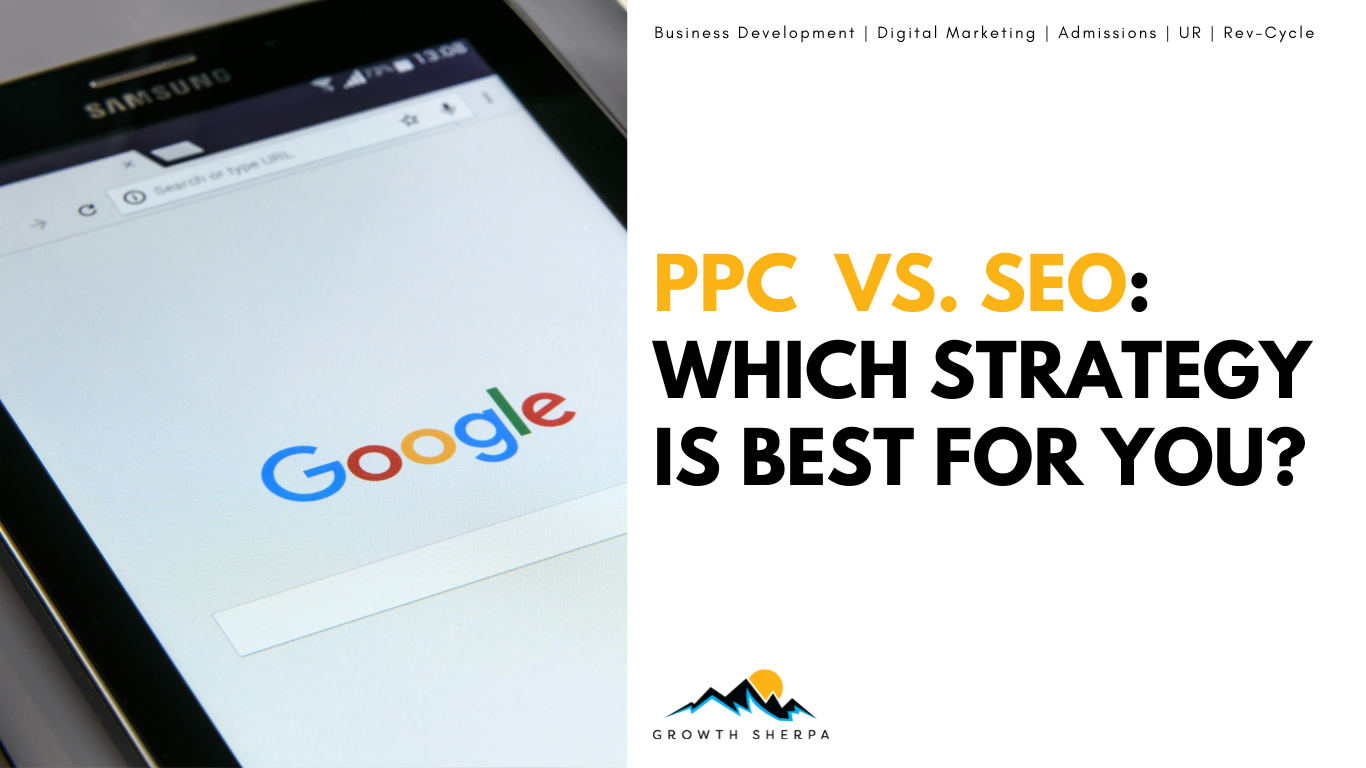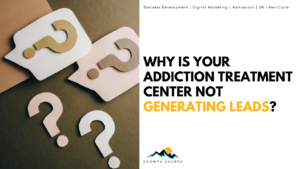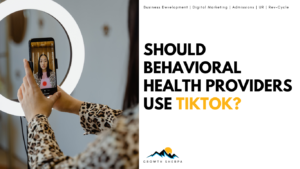In today’s competitive landscape, drug rehab facilities face unique challenges when it comes to attracting new patients. With a growing number of people searching online for addiction treatment options, having a strong digital presence is essential. Two of the most effective ways to drive traffic to your rehab center’s website are Pay-Per-Click (PPC) advertising and organic web marketing (SEO).
But which one should you focus on? The answer isn’t as simple as choosing one over the other. Both PPC and organic marketing are necessary for a well-rounded digital strategy, but the right mix depends on factors like your facility’s location, target demographics, and budget. In this blog, we’ll break down the pros and cons of PPC and organic web marketing and help you determine the best strategy for your unique rehab facility.
PPC Advertising for Rehab Facilities
PPC advertising involves paying for ad placements on search engines (such as Google) or social media platforms (such as Facebook or Instagram). You only pay when someone clicks on your ad, making it an attractive option for immediate visibility and results.
Pros of PPC:
- Instant Results: One of the biggest advantages of PPC is its speed. Unlike organic marketing, which can take months to build momentum, PPC ads can drive traffic to your website almost immediately. This is particularly helpful if you’re launching a new treatment program or want to fill beds quickly.
- Targeted Reach: PPC allows you to zero in on your ideal audience by targeting specific keywords, locations, and demographics. For example, if you run a facility in a major city, you can target local searches like “drug rehab centers in [City]” or focus on certain age groups, income levels, or interests.
- Customizable Budgets: PPC is highly flexible in terms of budget. Whether you’re a large multi-location facility or a smaller rehab center with limited resources, you can set your daily budget and adjust it as needed. You also have control over bidding for competitive keywords, ensuring you only spend money where it counts.
- Measurable Results: With PPC, you get detailed analytics and insights into your ad performance. You can track which keywords are driving the most clicks, how much each lead is costing, and even which ads lead to actual admissions. This data allows you to optimize your campaigns in real time.
Cons of PPC:
- High Costs in Competitive Markets: One of the biggest downsides to PPC is the cost, especially in competitive markets like addiction treatment. Keywords such as “drug rehab near me” or “addiction treatment center” can be incredibly expensive, with some costing upwards of $50 per click or more. The more competitive your geography or target demographic, the higher the costs can be.
- Short-Term Solution: While PPC provides quick results, it’s a short-term fix. The moment you stop paying for ads, your traffic dries up. PPC needs to be continuously funded to maintain visibility, making it a costly long-term strategy if not balanced with other efforts like SEO.
- Ad Fatigue: PPC ads are visible at the top of search results, but users are often aware they are clicking on paid ads. Over time, people may begin to skip over ads in favor of organic search results. This ad fatigue can reduce click-through rates and the overall effectiveness of PPC campaigns.
Organic Web Marketing (SEO) for Rehab Facilities
Search Engine Optimization (SEO), or organic web marketing, focuses on improving your website’s visibility in unpaid search results. By optimizing your site for relevant keywords and providing valuable content, you can gradually increase your rankings and attract traffic over time.
Pros of SEO:
- Cost-Effective in the Long Run: While SEO requires an upfront investment of time and resources, it becomes more cost-effective over time. Once you’ve built a solid foundation of high-quality content and optimized your website, it continues to drive traffic without the ongoing costs of PPC.
- Long-Term Benefits: Organic marketing efforts, such as writing blogs or improving your website’s technical structure, deliver long-term benefits. Once your website starts ranking higher in search results, it can continue to attract traffic and patients even if you take a temporary break from active marketing efforts.
- Increased Credibility and Trust: Studies show that users tend to trust organic search results more than paid ads. Appearing in the top organic listings gives your facility credibility, suggesting that your website is more relevant and valuable than those relying solely on ads. This trust is particularly important for rehab facilities, where potential patients or their families are often making difficult and highly emotional decisions.
- Broader Reach: SEO allows you to capture a wider audience by ranking for a variety of keywords. Instead of just targeting specific terms, you can optimize for long-tail keywords (e.g., “how to help a loved one with addiction”) that cater to different stages of the user’s journey.
Cons of SEO:
- Takes Time: SEO is a slow process. It can take months, or even over a year, to see significant improvements in your search rankings. This means that if you’re looking for immediate patient admissions or quick growth, SEO alone might not be enough.
- Ongoing Effort: Search engine algorithms are constantly evolving, which means you’ll need to consistently update your content and website to maintain your rankings. SEO isn’t a one-and-done effort; it requires continuous optimization and attention.
- Highly Competitive for Certain Keywords: Just like PPC, SEO can be extremely competitive for high-demand keywords, particularly in urban areas where many rehab facilities are vying for attention. While organic rankings can be more stable, it takes significant effort and expertise to compete for top spots.
Finding the Right Balance: PPC vs. Organic
So, which is better for your drug rehab facility—PPC or organic marketing? The answer is both, but the ideal mix depends on the unique characteristics of your facility. Here are some factors to consider:
- Geography: If you’re located in a competitive market with many treatment centers, a mix of PPC and SEO is crucial. You may need PPC for immediate visibility, while building a long-term SEO strategy to differentiate yourself organically.
- Demographics: Are you targeting a younger audience? If so, PPC ads on platforms like Instagram or Google may be more effective. However, if your audience tends to trust in-depth resources, such as articles or case studies, an investment in SEO might yield better long-term results.
- Budget: Facilities with a larger marketing budget may be able to afford ongoing PPC campaigns, but smaller facilities may benefit from the cost-effectiveness of SEO. Still, even with a modest budget, a limited PPC campaign can complement your SEO efforts to drive traffic when needed.
- Growth Goals: If you need immediate patient admissions, PPC is a great short-term solution. However, if your goal is to build a sustainable pipeline of leads and grow your reputation over time, SEO should be a central part of your strategy.
The Role of Both PPC and SEO in Your Marketing Strategy
Ultimately, PPC and SEO are not mutually exclusive. The most successful drug rehab facilities employ a combination of both strategies to attract new patients and build their reputation online. PPC provides immediate results, helping you capture potential clients right away, while SEO builds a long-term foundation for sustainable growth. The exact mix will depend on your facility’s location, target audience, and budget, but investing in both can ensure that you’re visible when people need you most—whether they’re clicking on an ad or searching for trusted information.
If you’re not sure how to balance PPC and SEO for your unique facility, Growth Sherpa can help. We specialize in creating tailored digital marketing strategies for behavioral health and addiction treatment providers. Our team can help you maximize both short-term and long-term growth, ensuring that your facility gets the visibility it needs to thrive in a competitive landscape.




